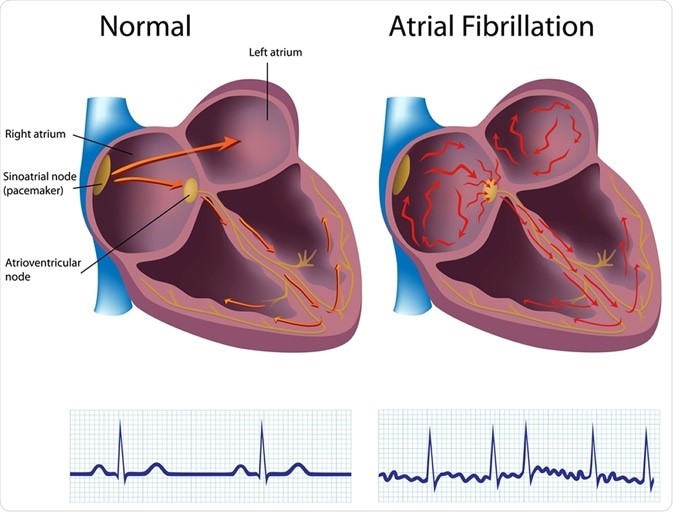A client diagnosed with Barrett's esophagus asks how he developed this. Which of the following responses by the nurse is most accurate?
"Your allergies have most likely contributed to this."
"Your history of gastroesophageal reflux disorder is the most likely cause."
"Being a vegetarian has caused an imbalance in stomach acid."
"This is a genetic condition that you were born with."
The Correct Answer is B
Choice A reason: This is incorrect because allergies are not a risk factor for developing Barrett's esophagus. Allergies are hypersensitive reactions of the immune system to certain substances, such as pollen, dust, or food. They can cause symptoms such as sneezing, itching, or hives, but they do not affect the esophagus or stomach acid.
Choice B reason: This is the correct answer because gastroesophageal reflux disorder (GERD) is the most common risk factor for developing Barrett's esophagus. GERD is a condition where the lower esophageal sphincter (LES) does not close properly and allows stomach acid to flow back into the esophagus. This can cause inflammation, irritation, and damage to the esophageal lining. Over time, this can lead to changes in the cells of the esophagus, which is called Barrett's esophagus.
Choice C reason: This is incorrect because being a vegetarian is not a risk factor for developing Barrett's esophagus. Being a vegetarian means avoiding meat and animal products in the diet. This can have health benefits such as lower cholesterol and blood pressure levels, but it does not affect the esophagus or stomach acid.
Choice D reason: This is incorrect because Barrett's esophagus is not a genetic condition that one is born with. Barrett's esophagus is an acquired condition that results from chronic exposure to stomach acid in the esophagus. It is not inherited from one's parents or passed on to one's children.

Nursing Test Bank
Naxlex Comprehensive Predictor Exams
Related Questions
Correct Answer is A
Explanation
Choice A reason: This is the correct answer because atrial fibrillation is the risk factor that puts the client at
the highest risk for embolic stroke. Atrial fibrillation is an irregular and rapid heart rate that causes poor blood flow and blood pooling in the heart chambers. This can lead to the formation of blood clots that can travel to the brain and block an artery, causing an embolic stroke.
Choice B reason: This is incorrect because hypertension is not the risk factor that puts the client at
the highest risk for embolic stroke. Hypertension is high blood pressure that puts stress on the blood vessels and increases the risk of bleeding or rupture. This can lead to a hemorrhagic stroke, but not an embolic stroke.
Choice C reason: This is incorrect because diabetes is not the risk factor that puts the client at
the highest risk for embolic stroke. Diabetes is a condition that causes high blood sugar levels and damages the blood vessels and nerves. This can lead to poor circulation and increased risk of infection and ulcers, but not an embolic stroke.
Choice D reason: This is incorrect because alcohol abuse is not the risk factor that puts the client at
the highest risk for embolic stroke. Alcohol abuse is excessive consumption of alcohol that affects liver function and blood clotting factors. This can lead to liver disease and bleeding disorders, but not an embolic stroke.

Correct Answer is D
Explanation
Choice A Reason: This is incorrect because administering medications and electrolytes is not the primary purpose of inserting a nasogastric tube for a client with acute peritonitis. Medications and electrolytes can be given through other routes, such as IV or oral.
Choice B Reason: This is incorrect because dilating the stomach as a presurgical preparation is not a relevant Reason for inserting a nasogastric tube for a client with acute peritonitis. Dilating the stomach may be done before some types of gastric surgery, but it does not apply to peritonitis.
Choice C Reason: This is incorrect because stating that you will not be able to eat for several days is not an adequate explanation for inserting a nasogastric tube for a client with acute peritonitis. This statement does not address the rationale or the benefits of the procedure. It may also cause anxiety and resentment in the client.
Choice D Reason: This is the correct choice because removing secretions and decompressing the stomach is the main Reason for inserting a nasogastric tube for a client with acute peritonitis. Peritonitis is an inflammation of the peritoneum, the membrane that lines the abdominal cavity. It can cause abdominal distension, pain, nausea, and vomiting. A nasogastric tube can suction out the gastric contents and reduce the pressure and irritation in the abdomen.
Whether you are a student looking to ace your exams or a practicing nurse seeking to enhance your expertise , our nursing education contents will empower you with the confidence and competence to make a difference in the lives of patients and become a respected leader in the healthcare field.
Visit Naxlex, invest in your future and unlock endless possibilities with our unparalleled nursing education contents today
Report Wrong Answer on the Current Question
Do you disagree with the answer? If yes, what is your expected answer? Explain.
Kindly be descriptive with the issue you are facing.
